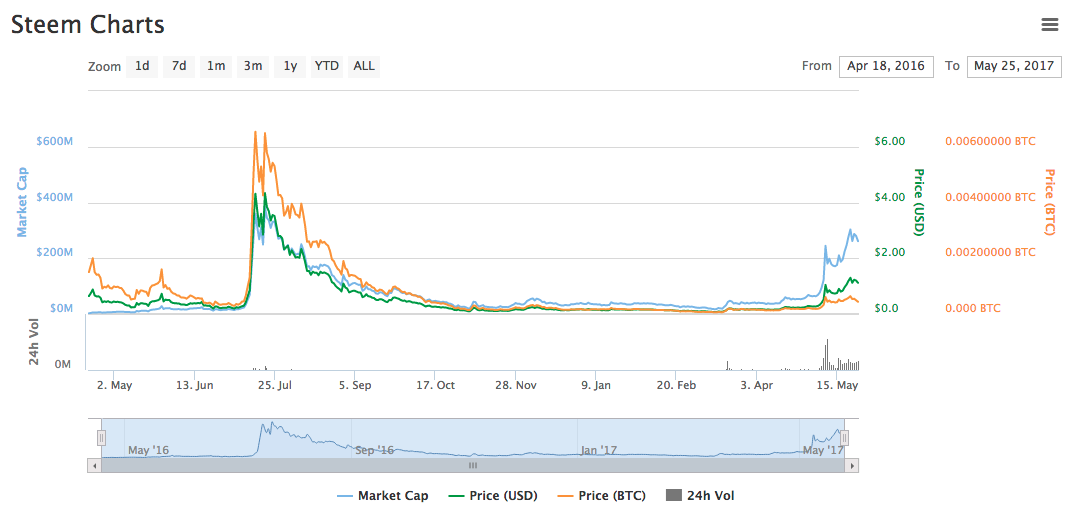Inspired by Reddit, Steemit is a blogging and social networking website running on top of a blockchain that pays users and content creators for posting and curating the best content.
Founded in 2016, Steemit is the brainchild of Ned Scott and Daniel Larimer, creator of BitShares. The platform is relatively new but has nevertheless grown rapidly in community size and content. As of May 2017, Steemit had over 168,000 registered accounts.
Steemit: how it works?
 Steemit uses an algorithm to determine the value of each user’s contribution: the more a user contributes to the platform, the more his or her influence grows.
Steemit uses an algorithm to determine the value of each user’s contribution: the more a user contributes to the platform, the more his or her influence grows.
Users can be curators, contributors or both, and can write about most any topic, from mainstream to niche subjects. Like Reddit, content on Steemit is organized into sub-groups and topics.
The social network runs on top of a decentralized network called Steem. Like Bitcoin, Steem is a blockchain with transferable tokens. In the case of Steem, there are two tokens: the Steem token and the Steem Dollar.
The Steem token is the network’s base token used to reward users who upload articles, images and commentary, as well as those who source and upvote popular content. Steem is traded on multiple cryptocurrency exchanges and markets, and its value determines the value of posting rewards on Steemit. Its value also backs the value of Steem Dollars.
The Steem Dollar is an asset intended to be pegged to the US dollar which can be used for payments for goods and services. Like Steem tokens, Steem Dollars can be traded at cryptocurrency exchanges.
Steem can also be converted into Steem Power, which locks up its value for a two-year period. During that period, Steem Powers in one’s account grow through a process referred to as staking, a method for validating and confirming data on the Steem blockchain.
While Steemit.com is the reference front-end website interface for the blockchain content of Steem, the network also allows third-party websites and apps to connect and interact with the Steem database.
Several developers have already done so and numerous alternative interface designs and features currently exist such as Instagram-style image posting, as well as Busy.org, a Steem-interacting social network, and eSteem, a Steem-interacting Android and iOS app.
A rocky start
Despite a price surge during Steemit’s first three months of existence, a hack in July 2016 raised questions about security. At the same time, the craze surrounding the new social network draw attention from the cryptocurrency community.
Some members of the community voiced their concerns publically and pointed out the “ponzi scheme aspects” of Steemit, among other issues. The negative publicity pushed the price of Steem down by 98%+ from 4 USD/STEEM in mid-July 2016 to 0.07 USD/STEEM as of mid-March 2017.
And as if that were not enough, co-founder Dan Larimer resigned as CTO of Steemit two months. Larimer’s two-sentence post gave no explanation or reason for the departure.
Nevertheless, Steemit still remains and apparently has a growing user base.
The Steem token is now trading at around 1.30 USD/STEEM and has a market capitalization of over US$310 million, making it the 16th largest cryptocurrency by market cap behind more popular ones such as Bitcoin (market cap: US$39 billion) and Ethereum (market cap: US$18 billion).

Steem chart via http://coinmarketcap.com/
The post Steemit, the Blockchain-Powered Social Network appeared first on Fintech Schweiz Digital Finance News - FintechNewsCH.
Comments